We tested a galvanized steel pipe from an indoor sprinkler system to determine the cause of pinhole corrosion. We used high-resolution 3D optical microscopy with our Keyence 7000N and laser-induced breakdown spectroscopy (LIBS) for elemental microanalysis to find that microbiologically influenced corrosion (MIC) caused the corrosion.
Steel Pipe Corrosion Images and Findings:
Indoor Sprinkler System Galvanized Steel Pipe
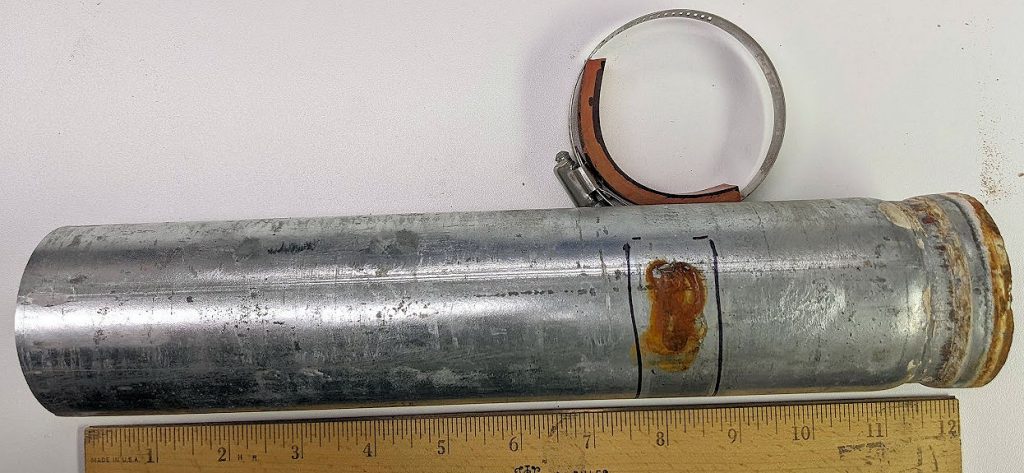
Sectioned Pipe Showing Interior Corrosion
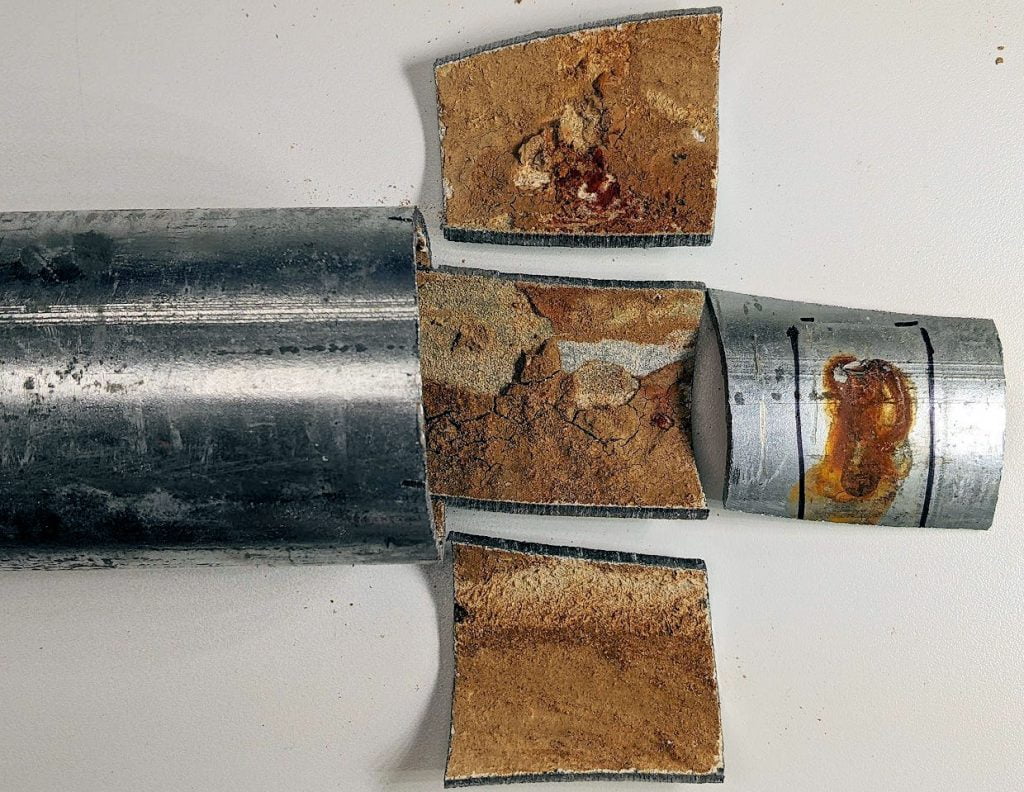
Interior of the Pipe with Pinhole Corrosion
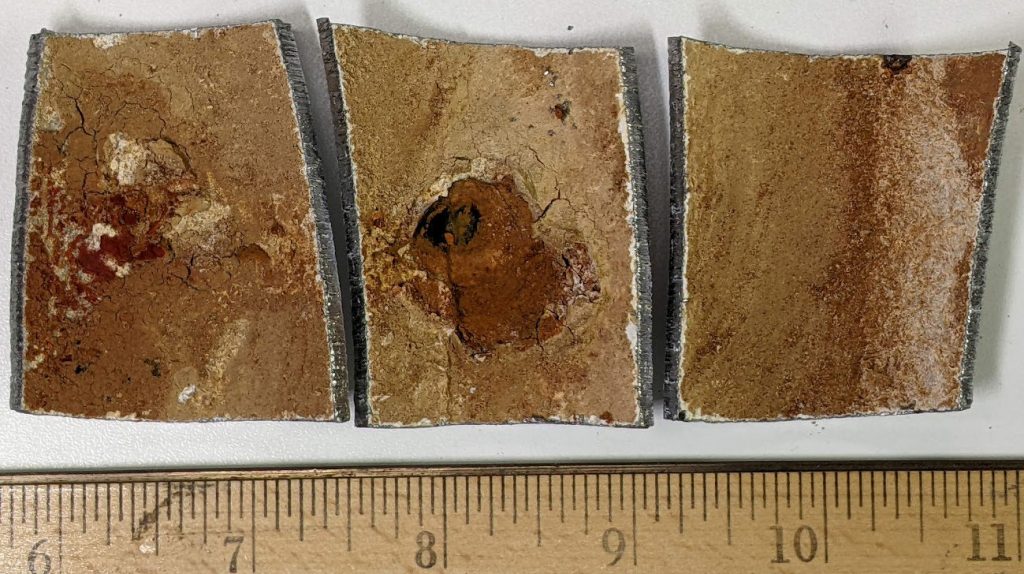
MIC Pit on the Inside Wall of the Pipe
- The deepest part of the pit is the black vertically oriented area on the right side of the image below.
- A hazy translucent line along the bottom edge suggests the presence of organic material.
- However, the outside wall pit was more likely the cause of this corrosion pit.

Exterior Wall MIC Pit
- The pit is above the red scale bar, facing upward.
- The pit interior is dark brown, with wide lips of bare steel.
- The light material on the right is the galvanized coating; outside the pit, the white materials are primarily zinc oxide.
- The white, somewhat translucent biofilm material is present near the edges of the pit.
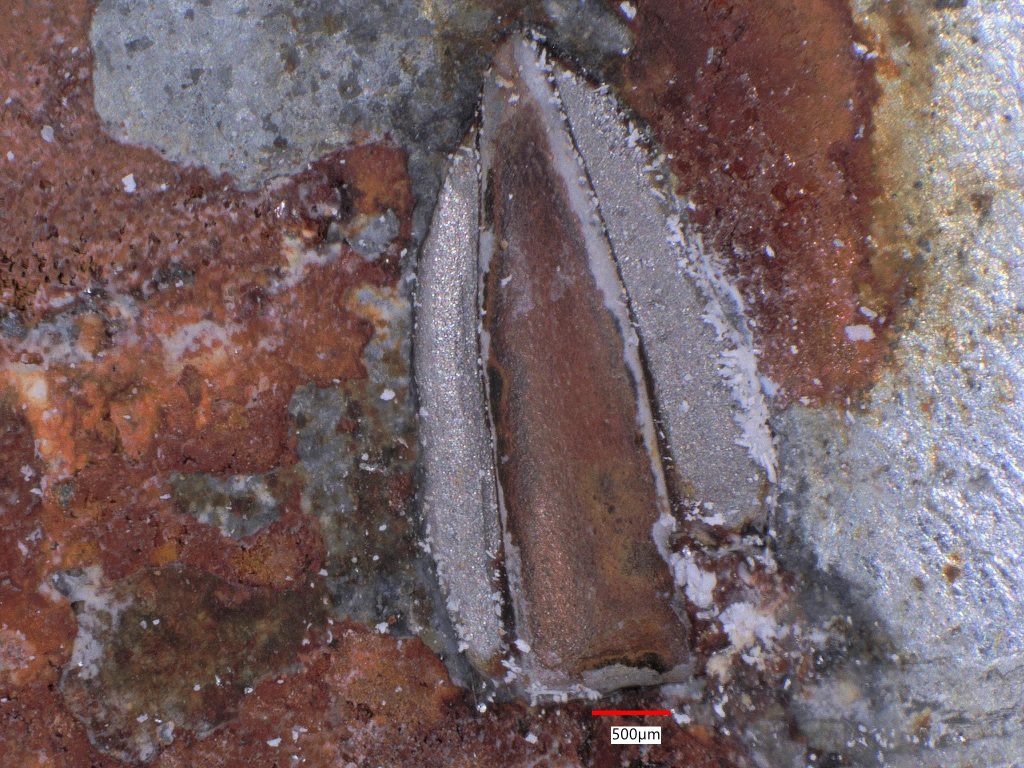
LIBS Analysis Results for White Film at the Pit Edge
- LIBS analysis showed the white edge material to be organic.
- Previous LIBS analysis on the reddish-brown material in the pit bottom identified it as iron oxide and iron hydroxide corrosion products.
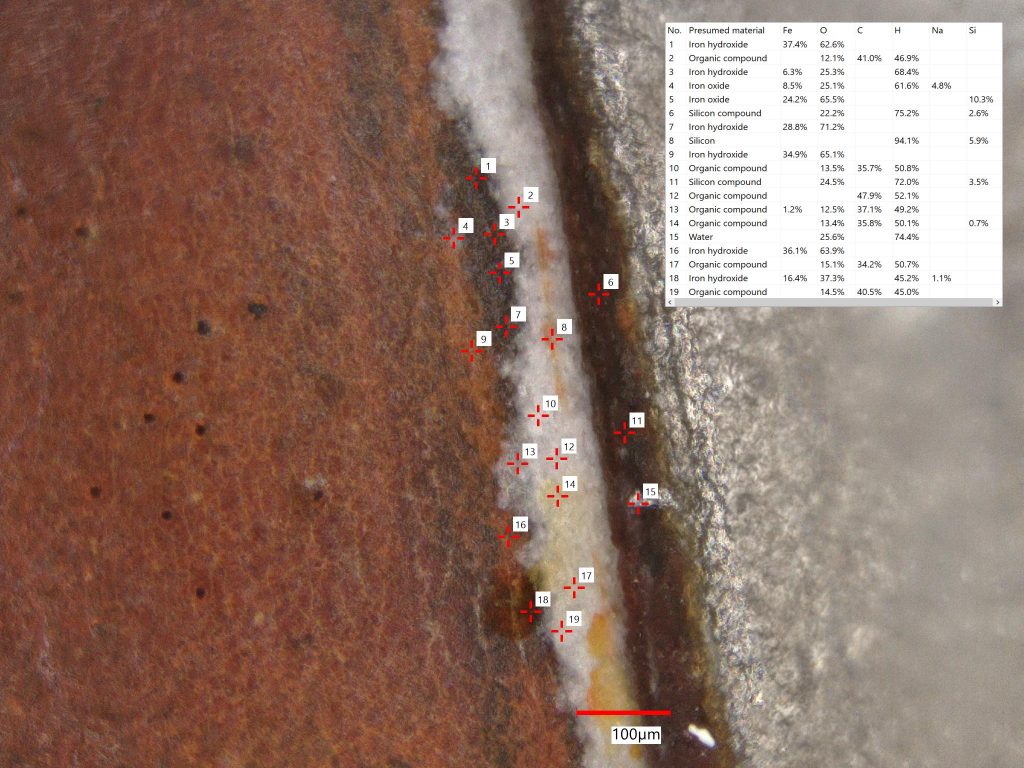
Biofilm Analysis with LIBS
- LIBS analysis of the biofilm showed the laser pulse destruction of the fragile film.
- The weakest pulse strength was used, yet it blew away the fragile organic material.
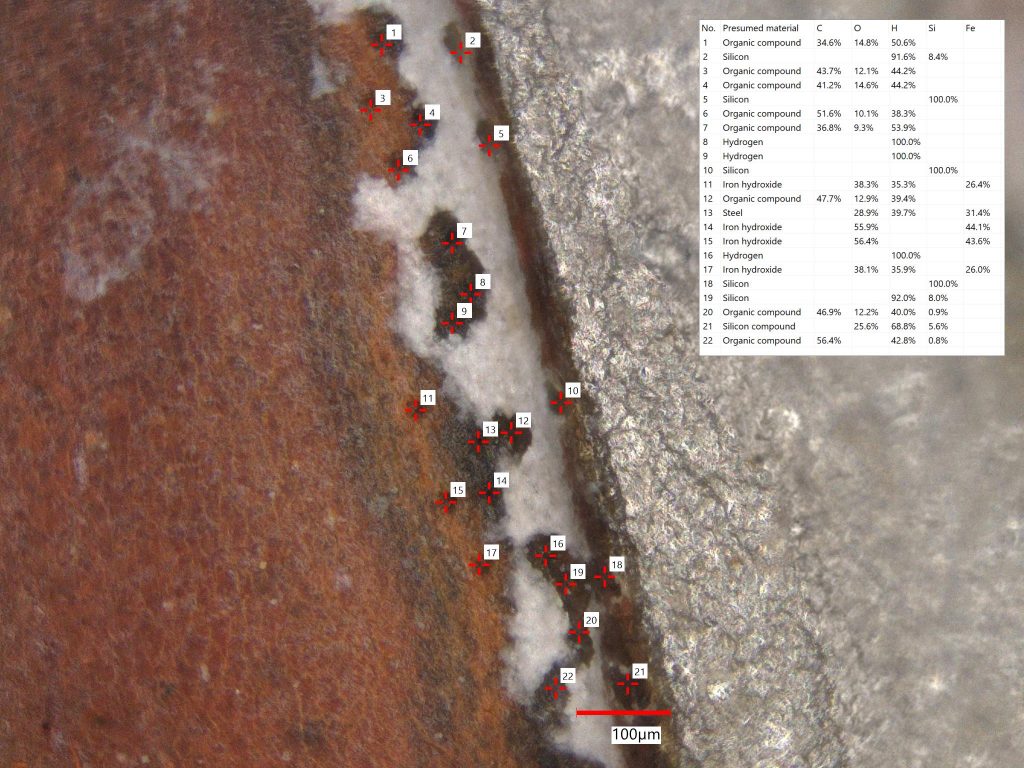
Smaller Pit Analysis
- A second smaller pit, which had not erupted through the pipe, was also tested and showed much biofilm on the inner wall.
Conclusion:
Anderson Materials Evaluation concluded that pitting corrosion of the indoor sprinkler system galvanized steel pipe was caused by Microbiologically Influenced Corrosion (MIC).
For more examples of our corrosion analysis investigations, click Here.
Contact Us
If you have any questions or need our assistance, please feel free to contact us. Our team of scientists is happy to work with your business to figure out any unique issues with your materials.
